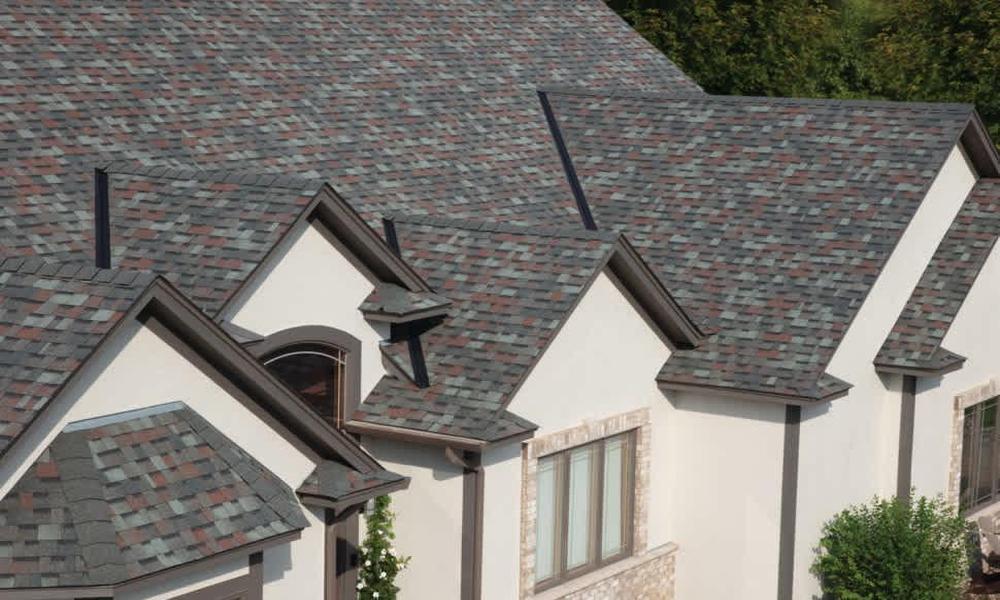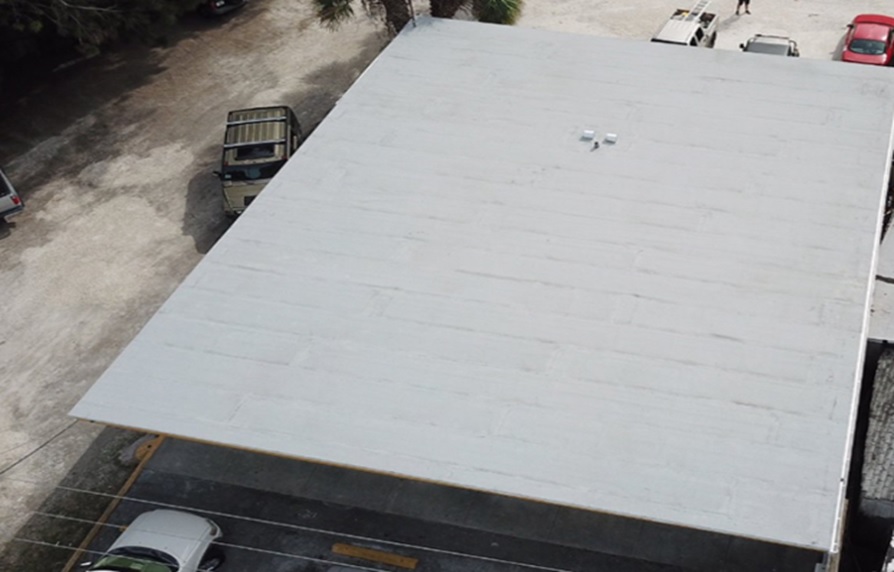
The roof is composed of numerous components that collectively protect your home. Understanding the function of each element and its impact on your roof’s overall structure can provide insight into why maintaining your roof in good condition is essential.
The roof can be divided into three major sections: the roof structure, the roof covering, and the roof’s edge. Here are the key elements:
ROOF STRUCTURE
You see the roof structure when the roof is being constructed. A roofer’s expertise in appropriately structuring a roof is vital in ensuring its durability and effectiveness. This includes:
RAFTERS
The main supporting beams of a roof, known as rafters, run from the peak of the roof to the eaves, carrying the weight of the entire structure. Usually made of wood, rafters provide rigidity and stability to your roof.
PURLINS
Purlins are typically attached to rafters at right angles, providing support and strength to the structure. They can also serve as backing for other components such as fascia boards and soffits. Purlins can be made from wood or metal and are placed along the length of the roof.
PITCH
The pitch of a roof refers to its slope. The options range from very low to very high pitches. The steeper the pitch, the better the roof sheds water and snow. The correct pitch depends on your local climate and the architectural style you’re aiming for.
ROOF COVERING
The roof covering is the topmost layer of the roof and what you see from the ground. It can be made of materials like metal sheets, metal shakes, clay tiles, slate, or concrete tiles. Different roof coverings offer varying degrees of protection, aesthetic appeal, and longevity. The main components of a roof covering include:
UNDERLAYMENT
Before installing the roof cover, an underlayment (a felt-like material) is applied to protect against moisture. Most roofers use asphalt felt paper, which is waterproof and safeguards the roof from rain and snow. Underlayment also adds strength to the roofing system.
DECKING
The decking can be composed of plywood or oriented-strand board (OSB). As the primary structural support of the roof, decking helps keep the shingles in place. While plywood is more durable than OSB, it offers superior protection against moisture.
SHINGLES
Shingles, the most visible part of a roof, come in various materials, including asphalt, clay, metal, tile, and slate. They protect the roof’s underlying layers from water infiltration and provide an aesthetic finish to your home. Choose shingles that fit your roof size and shape, taking durability, aesthetics, and cost into consideration.
FLASHING
Flashing is crucial for preventing water from seeping into your home through the roof. It’s used where two different materials meet, such as around skylights and chimneys. Flashing can be made from metal, rubber, vinyl, and other materials. Ensure that its installation and material follow local codes to prevent water infiltration.
ROOF’S EDGE
This is where the roof meets the walls. The roof’s edge should snugly fit against the walls and be strong enough to withstand harsh weather conditions. Depending on your location and weather conditions, you may need different types of edging.
DRIP EDGE
A drip edge is a molding placed around the roof’s edge to prevent water infiltration. Check your local building codes before installing drip edges.
FASCIA
Fascia is the board running along your roof’s edge that protects it from water infiltration. It should be made from durable materials like wood, vinyl, cement, or aluminum, and can be painted or stained to match your home’s color scheme.
SOFFIT
The soffit covers the underside of the roof, protecting it from weather damage. It should be made from robust material like aluminum or vinyl and sealed against moisture. In colder climates, install soffit vents to allow warm air to escape your attic and prevent ice dams.
GUTTERS & DOWNSPOUTS
Gutters and downspouts drain rainwater away from your foundation. They channel water off the roof and divert it away from windows, siding, doors, basement walls, and other crucial parts of your home. By doing so, they prevent water leakage into these areas, averting potential long-term damage.
This post was written by a roofing specialist at https://allstarroofingandrepair.com/, one of the best roofing companies in the Tampa Bay area! We are a family-owned and operated roofing business, striving to be the best in our industry. Our family has been in the Tampa Bay area for over 60 years, and our objective has always been to provide roofing services at a fast, reliable, and competitive rate. All Star Roofing has a tradition of quality workmanship, servicing residential and commercial properties.



